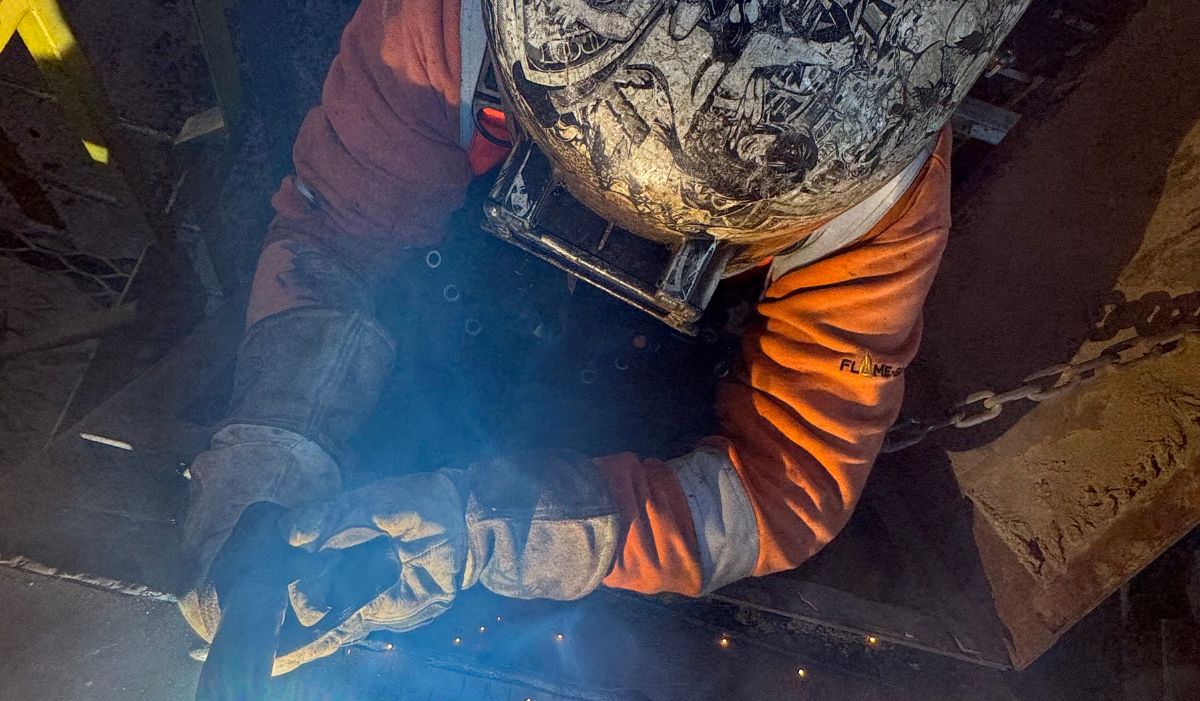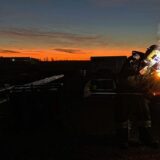15 Must-Know Welding Techniques Every New Welder Should Learn
Welding is an essential skill in many industries, offering endless possibilities for projects and repairs. As a new welder, mastering a core set of techniques will set you up for success. In this blog, we’ll explore some key welding techniques every novice should learn to build a strong foundation.
1. Understanding the Basics of MIG Welding
MIG welding, or Metal Inert Gas welding, is one of the easiest techniques to learn for beginners. It involves using a wire feeder to join metals, making it ideal for quick and efficient welding projects. MIG welding is particularly well-suited for low-volume work and offers good penetration for different thicknesses, from automotive body repairs to home projects. As a beginner, you’ll appreciate its simplicity and versatility, which allows for both precision and strong welds. Additionally, the constant feed of wire makes continuing a weld seamless and fluid.
When starting with MIG welding, it’s essential to understand how to adjust the settings on the machine – often a balance between wire feed speed and voltage. Gas Metal Arc Welding (GMAW) provides a clean and eco-friendly way to handle assignments, as long as the appropriate shielding gas is used to protect the weld pool from contaminated environments. Remember, it’s crucial to maintain a steady hand and consistent speed as you guide the welding gun along the seam to create smooth, uniform welds.
2. The Essentials of TIG Welding
TIG welding offers precision and control over the weld, which is why it’s often chosen for intricate projects. It uses a tungsten electrode and requires the welder to manually feed the filler material. This method is meticulous and demands a high level of concentration and deftness of hand. Many artisans and professionals embrace TIG welding for its ability to produce clean, aesthetically pleasing, and durable joins, often necessary in aerospace and automotive industries.
Regarding TIG or Gas Tungsten Arc Welding (GTAW), the ability to control both the heat of the arc and the speed of the feed gives a welder the power to manipulate the weld on a microscopic level—a skill that’s as much art as it is science. The process is slower than other forms of welding, but the superior quality of the welds makes the investment worthwhile. Fine-tuning the balance between heat and speed is a skill perfected over time, offering welders a significant advantage in quality-sensitive applications.
3. Getting Started with Stick Welding
Stick welding, or Shielded Metal Arc Welding (SMAW), utilizes a consumable electrode coated in flux. The versatility of this welding technique allows it to be used effectively across various conditions, including outdoor environments, where it shines despite wind or weather conditions. Known for its robust bonds, stick welding is applicable for heavy metal welds, making it popular in industrial settings.
A beginner should embrace the adaptability of stick welding. Learning how to adjust the amperage to suit different electrode types and thicknesses will be key, as each situation will vary due to the conditions and materials involved. Shielded Metal Arc Welding is not just about brute force; it requires keen attention to the slag, the byproduct which shields the weld pool and prevents contamination until cooled. By consistently refining technique, new welders can ensure clean finishes and sturdy, uniform bridges between metals. Remember, practice makes perfect!
4. Mastering Flux-Cored Arc Welding
Flux-cored arc welding is similar to MIG but features a unique twist with its special tubular wire filled with flux. This process enables welding in challenging conditions that may deter other methods. By using a flux-cored electrode, it effectively allows welders to work without resorting to shielding gas, which is especially advantageous for outdoor welding projects where wind could otherwise undermine the integrity of the weld.
This type of welding is particularly beneficial for handling thicker materials with its deep penetration and robust joints. The key to mastering Flux Cored Arc Welding (FCAW) is understanding the unique properties of the flux inside the wire: it creates a barrier against oxidation and atmospheric contamination, ensuring the weld remains uncompromised. Beginners are encouraged to experiment with different combinations of wire and voltage settings to determine the best fit for each specific application. This skill, once honed, offers unmatched versatility and reliability across various environments.
5. Learning Oxy-Acetylene Welding
Oxy-acetylene welding, also known as gas welding, relies on the use of a flame created from acetylene gas mixed with oxygen. This technique carries significant versatility when it comes to cutting and joining metals, adapting easily to small-scale repairs and detailed work. It’s been a staple in metalworking for decades due to its ability to heat and modify materials precisely.
For beginners, mastering oxy-acetylene involves understanding the control of both heat and flame to successfully join materials. Knowing how to adjust the gas and flame settings to suit different metals is essential. Familiarity with this type of welding opens doors to niche applications that require welded joints with remarkable aesthetic and structural quality. Careful practice ensures mastery over this timeless technique that remains invaluable across many professional crafts.
6. Exploring Plasma Arc Welding
Plasma arc welding, a derivative of TIG welding, utilizes a plasma torch, granting welders unparalleled control and precision. This advanced technique caters specifically to thin materials, making it ideal for electronics and jewelry industries, where precision is paramount.
Beginning with plasma arc welding requires a solid understanding of how to control the plasma’s arc while maintaining its containment within the torch nozzle. The sophisticated nature of Plasma Arc Welding (PAW) necessitates expertise; however, its ability to produce precise and high-quality welds makes it a worthwhile challenge for those eager to expand their skills. Dive into practicing this method under the guidance of experienced professionals to open up new possibilities in your welding career trajectory.
7. An Introduction to Spot Welding
Spot welding is crucial in industries that rely on quickly joining sheets of metal, particularly in the automotive and manufacturing sectors. It welds metals at specific ‘spots’ or points to form solid connections between parts. Once the process is refined, it’s an excellent option for mass production due to its speed and efficiency.
Incorporating spot welding into a welder’s skill set adds an aspect of automation, as welding units typically integrate into assembly lines. Learning to adjust the electrical current and pressure applied by electrodes is key, ensuring consistent, reliable welds without causing metal warping. Mastery of this technique provides the edge necessary for work that demands rapid and repeatable results, balancing production speed with uncompromised metal integrity.
8. Discovering Submerged Arc Welding
Submerged arc welding is characterized by its method of submersing the welding arc beneath a bed of granular flux, allowing for deep penetration and strong bonds. Ideal for heavy-duty tasks involving thick plates, this process is prevalent in shipbuilding and bridge construction — projects that require long, uninterrupted welds.
Perfect for heavy fabrication applications, submerged arc welding minimizes exposure to fumes and sparks, enhancing safety. Beginners should focus on managing the granular flux effectively and maintaining steady material feed rates to harness the full potential of this technique. Learning submerged arc welding under expert supervision will ensure the development of proficiency in applications demanding resilience and longevity.
9. Practicing Fillet and Groove Welds
Understanding fillet and groove welds are essential to mastering joint formations in welding. Fillet welds are versatile, utilized in T, lap, and corner joints, effectively anchoring two surfaces at angles. Their inherent strength finds particular utility in construction and fabrication projects requiring durability.
Conversely, groove welds are often used in butt joints, with the welded metal filling a groove between two pieces. Successfully performing groove welds allows for seamless transitions between metals, forming robust connections. Proficiency in both fillet and groove welds equips new welders with the fundamental skills pivotal to tackling a wide array of welding challenges, reinforcing structures with integrity and finesse.
10. Perfecting the Weld Positioning Techniques
Mastering welding positions is the key to achieving consistent, quality welds across various orientations. Welders need to become proficient in flat, horizontal, vertical, and overhead positions, each demanding unique approaches and skill sets.
Crucial to a beginner’s progression, welding in different positions introduces challenges like managing gravity, heat control, and the weld pool’s consistency. For instance, overhead welding requires finesse to prevent sagging, while vertical positions demand controlled, uphill movements for structural integrity. Each position presents distinct benefits and hurdles, reinforcing the welders’ adaptability to meet diverse project needs with precision and efficacy.
11. Improving Your Welding Speed and Efficiency
Efficiency in welding does not just mean speed; it encapsulates the quality and accuracy of the welds produced in a given timeframe. Developing smooth, consistent welding techniques over time enables welders to complete projects quickly without sacrificing integrity.
Learning to optimize welding speeds and refine settings based on material and position enhances efficiency. Implementing strategies such as pre-planning welds and preparing materials can significantly reduce setup time, allowing for more productive welding sessions. Through practice and mindful adjustment, welders can maximize their productivity and consistently achieve high-quality results with less rework.



